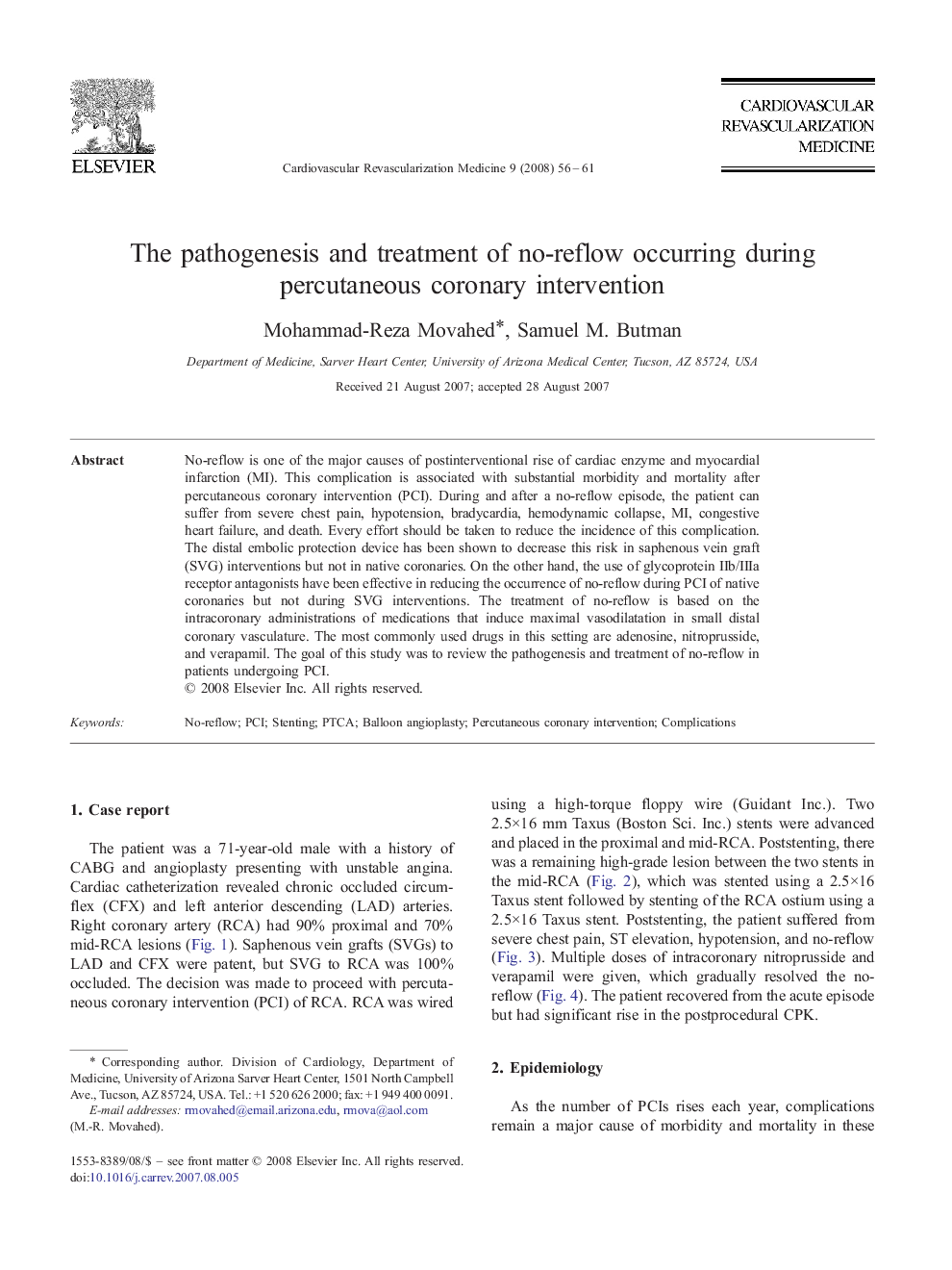| کد مقاله | کد نشریه | سال انتشار | مقاله انگلیسی | نسخه تمام متن |
|---|---|---|---|---|
| 2838030 | 1164910 | 2008 | 6 صفحه PDF | دانلود رایگان |

No-reflow is one of the major causes of postinterventional rise of cardiac enzyme and myocardial infarction (MI). This complication is associated with substantial morbidity and mortality after percutaneous coronary intervention (PCI). During and after a no-reflow episode, the patient can suffer from severe chest pain, hypotension, bradycardia, hemodynamic collapse, MI, congestive heart failure, and death. Every effort should be taken to reduce the incidence of this complication. The distal embolic protection device has been shown to decrease this risk in saphenous vein graft (SVG) interventions but not in native coronaries. On the other hand, the use of glycoprotein IIb/IIIa receptor antagonists have been effective in reducing the occurrence of no-reflow during PCI of native coronaries but not during SVG interventions. The treatment of no-reflow is based on the intracoronary administrations of medications that induce maximal vasodilatation in small distal coronary vasculature. The most commonly used drugs in this setting are adenosine, nitroprusside, and verapamil. The goal of this study was to review the pathogenesis and treatment of no-reflow in patients undergoing PCI.
Journal: Cardiovascular Revascularization Medicine - Volume 9, Issue 1, January–March 2008, Pages 56–61